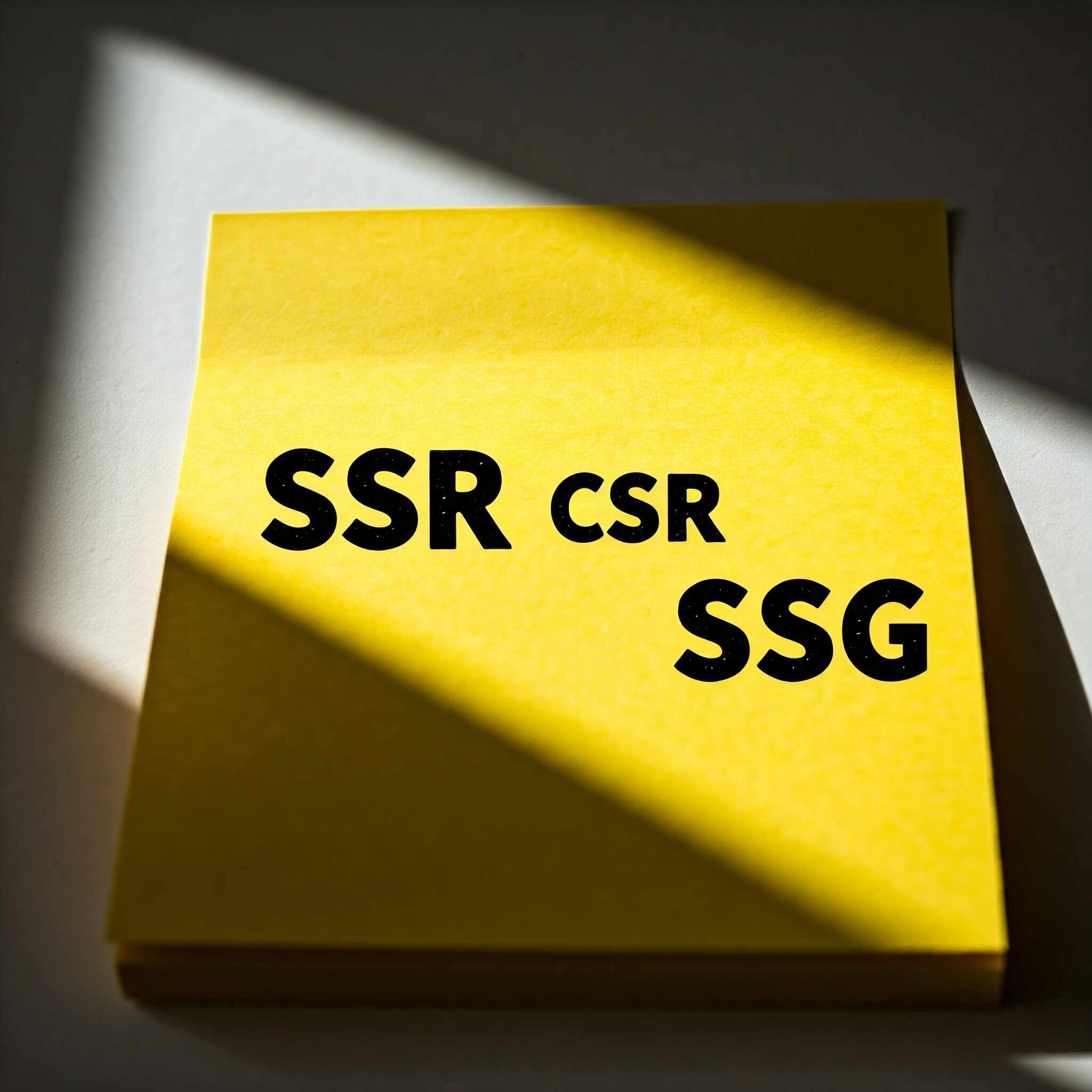SSR vs. CSR vs. SSG: Choosing the Best Rendering Approach for 2024
Shubham Prakash

Introduction
As web applications grow more complex, choosing the right rendering strategy has become crucial for delivering optimal performance and user experience. In 2024, web developers are primarily choosing between three popular approaches: Server-Side Rendering (SSR), Client-Side Rendering (CSR), and Static Site Generation (SSG).
Each rendering method has its own set of advantages, disadvantages, and ideal use cases. In this blog, we’ll dive into the differences between SSR, CSR, and SSG, and provide guidance on how to select the right approach for your next project.
1. Understanding the Three Rendering Approaches
a) Client-Side Rendering (CSR)
In Client-Side Rendering (CSR), the browser downloads a minimal HTML file, along with JavaScript and other assets (like CSS), which then render the content on the client side. The application logic runs entirely in the browser, which dynamically generates the page content using JavaScript.
Pros:
- Interactivity and Responsiveness: Great for highly interactive applications, such as Single Page Applications (SPAs), where fast page transitions and dynamic content are essential.
- Reduced Server Load: Since the rendering happens on the client side, the server only needs to serve static assets, reducing server load.
Cons:
- Initial Load Time: CSR can have a slower initial load time since the browser needs to download and execute JavaScript before rendering the content.
- SEO Challenges: Search engines may have difficulty crawling CSR pages, especially if content is loaded dynamically. However, modern search engines have improved significantly in handling JavaScript-rendered content.
Use Cases:
- Dashboards, complex web applications, and SPAs where interactivity and dynamic content updates are priorities.
b) Server-Side Rendering (SSR)
Server-Side Rendering (SSR) involves generating the HTML of a web page on the server for each request. The server dynamically generates the HTML and sends it to the client, where JavaScript takes over to make the page interactive.
Pros:
- Improved SEO: Since the content is rendered on the server and sent as a fully-formed HTML page, search engines can easily crawl and index the content.
- Faster Initial Load: The initial content is available immediately, reducing perceived load time for the user.
Cons:
- Higher Server Load: Each request requires server processing to generate the page, which can increase server load and may require scaling.
- Complexity: Implementing SSR can be more complex, requiring additional server-side infrastructure and logic.
Use Cases:
- Content-heavy websites, blogs, e-commerce sites, or any application where SEO and faster initial load times are critical.
c) Static Site Generation (SSG)
Static Site Generation (SSG) involves generating the HTML files for all pages at build time, rather than on each request. These static files are then served directly to the client from a Content Delivery Network (CDN).
Pros:
- Performance: Static files can be served very quickly from a CDN, providing fast load times and low latency.
- Scalability: SSG scales extremely well since serving static files is inexpensive and fast.
- SEO Friendly: Since content is pre-rendered and available as static HTML, search engines can easily crawl and index the content.
Cons:
- Lack of Real-Time Updates: SSG is not ideal for sites that require frequent updates or real-time data, as it requires rebuilding the site to update content.
- Build Time: For large sites, the build time can be long, especially if many pages are generated.
Use Cases:
- Blogs, documentation sites, marketing pages, and sites with infrequently changing content where performance and SEO are priorities.
2. How to Choose the Right Rendering Approach?
Choosing the right rendering strategy depends on several factors, including the nature of your application, SEO requirements, performance needs, and development complexity.
a) Assess Your Application Type
- Highly Interactive Applications: If your application is highly interactive and relies on frequent dynamic content updates (e.g., SPAs, dashboards), CSR might be the best choice.
- Content-Heavy Sites: If your site is content-heavy and SEO is a top priority (e.g., news sites, blogs, e-commerce), SSR is a great option.
- Static Content Sites: For sites with mostly static content that rarely changes (e.g., landing pages, portfolios), SSG offers excellent performance and scalability.
b) Consider SEO and Performance Needs
- SEO Priority: If SEO is crucial, SSR or SSG are the preferred choices, as they provide pre-rendered HTML that is easily crawled by search engines.
- Performance Requirements: If performance is a key concern, SSG offers the fastest load times due to static files being served directly from a CDN.
c) Evaluate Development and Infrastructure Complexity
- Ease of Development: CSR is often simpler to implement with frameworks like React or Vue, where the focus is on building SPAs.
- Server Resources and Costs: SSR requires server resources to render pages on each request, which may increase hosting costs and complexity. SSG minimizes server costs by serving static files.
3. Tools and Frameworks for Each Approach
a) Client-Side Rendering (CSR) Tools
- React, Vue, Angular: Popular JavaScript frameworks for building CSR applications. Tools like Create React App and Vite can help streamline development.
- Next.js (CSR Mode), Nuxt.js (CSR Mode): Both Next.js and Nuxt.js can be configured to operate in CSR mode if needed.
b) Server-Side Rendering (SSR) Tools
- Next.js: A React framework for building SSR and SSG applications with powerful features like automatic code splitting and API routes.
- Nuxt.js: A framework built on top of Vue.js, providing an easy way to build SSR applications.
- Remix: A full-stack web framework focused on delivering fast web experiences with SSR and client-side routing.
c) Static Site Generation (SSG) Tools
- Next.js (SSG Mode): Provides built-in support for SSG, allowing developers to create static pages with dynamic data at build time.
- Gatsby: A popular framework for building static websites with React, offering a rich plugin ecosystem and data fetching capabilities.
- Hugo, Jekyll: Static site generators focused on speed and simplicity, often used for blogs and documentation sites.
4. Conclusion
Selecting the right rendering approach—SSR, CSR, or SSG—depends on the specific needs of your project. While SSR is great for SEO and content-heavy sites, CSR is ideal for highly interactive applications. SSG offers unmatched performance and scalability for static content sites.
By understanding the pros and cons of each method and evaluating the unique requirements of your project, you can make an informed decision that optimizes performance, scalability, and user experience.



